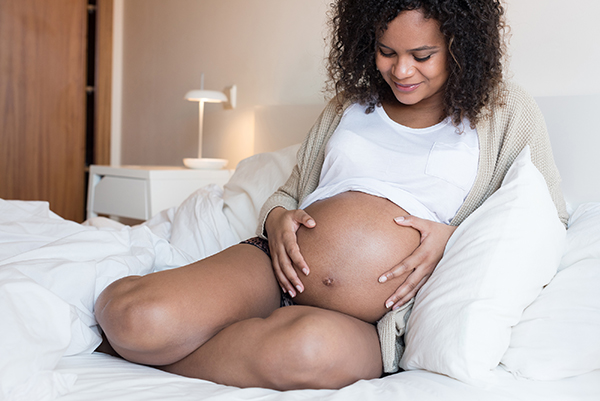It’s estimated that today about 1 out of every 3 pregnancies in the United States is delivered by Caesarean section.
Sounds kind of great, right? You get to pick the day, swan in, avoid the pain of labor then leave with a brand-new baby.
But wait: You do realize that C-sections are still major surgery, right?
Why so high?
It’s true that the rate of C-section has skyrocketed in the past two decades. “To be clear, it’s due to lots of reasons,” said Dr. Chadburn Ray, an OB/GYN at Augusta University Health.
A major one? Women are, well, unhealthier than they have been in the past, thanks to obesity and its related health problems, from diabetes to high blood pressure to joint issues. “In women with a body mass index of 45 for example, the C-section rate can be as high as 50 percent,” said Ray.
Another reason, sadly, is the current medical/legal environment, where there’s a trend of physicians being sued for performing C-sections too late. The result? More physicians will jump at doing a C-section out of fear of legal repercussions. “You never hear of a doctor being sued for doing a C-section too early,” said Ray.
Finally, there’s that lifestyle factor. Technically, babies can be safely delivered anytime after 37 weeks, so some hospitals may invite moms to choose the date—especially if they’re just sick and tired of being pregnant. Or, maybe it’s the doctor who will be out of town when mom is due. It’s also true that some hospitals have a culture that’s more supportive of doing C-sections.
“There are many reasons,” said Ray, “but it’s also important to realize that a C-section also involves risk for the patient, along with monetary risk—they’re higher cost—and also could impact your future fertility or how you deliver in the future.”
Recovery also tends to be tougher: In women who delivery vaginally, most feel like themselves again after a couple of weeks, compared to a full six weeks for someone who’s had a C-section.
Reasons a C-section might be for you…
At the same time, there are many good reasons to have a C-section—but they might not be what you think.
“It is absolutely best to have a vaginal delivery in cases where there is no problem with actually doing so,” said Ray.
So if you’re petite and your baby isn’t? Not a medically indicated reason, since even a petite woman can have plenty of room in her pelvis—although your doctor will likely check to make sure. Or what if if your baby is stubbornly late? Still not a reason.
But say your baby is in any position other than head down—that’s one major reason to deliver via C-section. Others include:
- Physical abnormalities, like hydrocephalus where a baby has a large head. But it’s worthwhile to note that not every abnormality instantly means a C-section, and that includes things like congenital heart defects.
- Fetal heart rate. If your baby’s heart rate tracing becomes abnormal, doctors may order a C-section immediately.
- Stalled labor. This is when your body just doesn’t want to go into full-blown labor, despite doctors’ best efforts.
- Special situations, which could include the placenta covering the cervical opening or if the mother has had a prior C-section or uterine surgery that could make vaginal delivery more risky. Still, even if you had a C-section before, that doesn’t always mean you’ll automatically need a C-section for your next baby.
C-section or not?
Even as the rate of C-section has gone up, the medical reasons for having a C-section haven’t. So medical organizations are taking notice. For example, the American College of Obstetrics and Gynecology (ACOG) along with the Society for Maternal and Fetal Medicine have instituted a quality measure to track any deliveries earlier than 39 weeks. If they are for any reason that is not medically indicated, that becomes a poor quality measure for the hospital.
The two organizations have also changed their approach to labor. Before 2016, if there was no change in the cervix for two hours, a C-section would be ordered. Now, that time has increased to four hours. “We’re a little more patient in labor now,” said Ray.
Even as the OB/GYN field is working on reining in the high rate of C-sections—and their risks—there’s one thing women can do too. “The number-one way to minimize risk for C-section is for women to optimize their health prior to a planned pregnancy,” said Ray. “That’s the single most important thing—to be as healthy as you can entering pregnancy. If you have poor health, especially as it relates to obesity and the health problems that come with it, you have a higher risk of C-section and a higher risk of a worse outcome for both you and your baby.”





